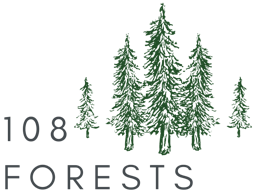
1. Planting Trees
Pros
1. Restoration of ecosystem
Planting trees can help restore degraded ecosystems, which can benefit both animals and plant species.
2. Erosion control
Trees can help prevent soil erosion, which can improve the health of the surrounding environment.
3. Implementation of agroforestry practices
Planting trees can provide opportunities to integrate agricultural and forestry practices, potentially creating more sustainable land use.
4. Restoration with native species
Planting native species can help restore the ecosystem to its original state, providing important habitat for wildlife and supporting biodiversity.
5. Community involvement
Tree planting efforts can bring communities together and strengthen social bonds.
Cons
1. Deforestation potentially increases
Since we could restore back areas, people might feel less bad about logging in the first place, basing their actions on the argument "But we can restore it...". Therefore, planting trees does not preserve forests, but it deals more with the after effects of deforestation.
2. Difficulty finding native species
Nurseries prioritize the production of "cash crops" over native species, making it difficult to source the trees needed for restoration.
3. High cost of native species
The cost of native trees can be high, with some species costing over $25 per tree, which can be a barrier to reforestation efforts.
4. High maintenance requirements
Seeds or saplings require ongoing maintenance, including pruning, watering, and maybe fertilization, which can be time-consuming, labor-intensive, and expensive.
5. Slow growth rate
Trees can take decades to reach maturity (~25-40yrs), which means that it can take a long time for the forest to develop into a mature ecosystem that me and my current generation can enjoy.
Learning
Planting trees is an important activity for regenerating areas that have been deforested or damaged by activities such as cattle farming. However, it can be a costly endeavor. For example, while supporting a sustainable reforestation plan with native species in Ecuador, we faced a budget of approximately $1M for 60ha.
Currently, many forest-planting schemes may not be well-informed about the best species for the region, often opting for trees that are good for harvesting wood or fruit. While the movement encourages people to donate as a safe solution to big problems like climate change, the planted trees may not be the best species for the area, and without proper care, many of the trees may not survive in the long run.
However, this does not mean that we should stop planting trees or making efforts to reforest areas. We must do our best to reforest in the most effective way possible.
Personally, after organizing tree-planting activities myself or supporting other organizations, i have come to realize that prevention of deforestation is of greater interest to me.